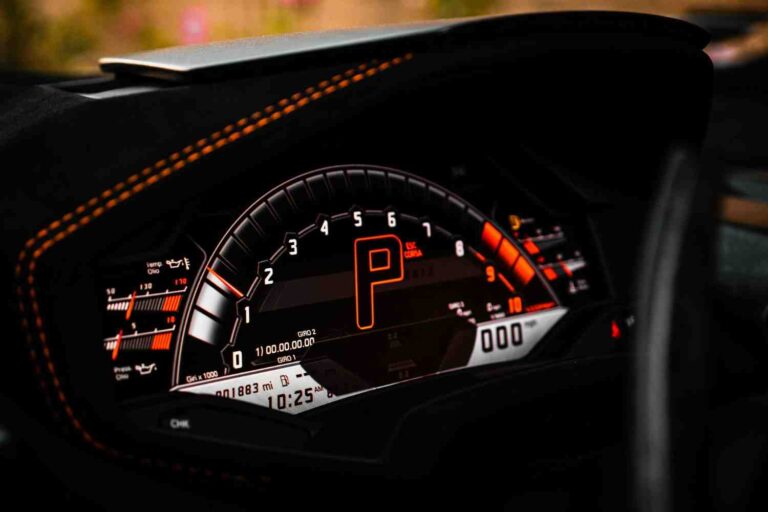Getting into a car accident is stressful enough. The paperwork, repair shops, and endless phone calls can feel overwhelming. But understanding how car insurance companies handle post-accident repairs and claim costs can make the process much smoother. After years in the insurance industry, I’ve seen how claim handling really works behind the scenes – from the first report to the final payment. Knowing what to expect helps you avoid frustration, spot red flags, and make sure you’re getting fair value for your coverage.

Step One: Reporting the Accident and Opening a Claim
Everything begins with that first call or app submission. Once you report an accident, your insurer assigns a claim number and an adjuster to your case. The adjuster’s job is to investigate what happened, determine who’s at fault, and estimate how much the damage will cost to repair.
Most companies now offer mobile claim tools, letting you upload photos, share dashcam footage, or submit a police report instantly. This speeds up processing and reduces back-and-forth communication. However, even with digital tools, accuracy still matters. Always document every detail – from damage photos to the location and time of the crash. The clearer your information, the faster your claim gets resolved.
If you’re unsure how different claim situations affect coverage, you can check my post on accidents on private property. It’s a common gray area that confuses many drivers.
The Role of the Adjuster: Your Claim’s Middleman
Once your claim is filed, the adjuster becomes your main point of contact. Think of them as the bridge between you and the repair process. Their first job is to confirm coverage. This means checking what kind of policy you have – liability, collision, or comprehensive – and what’s included under each.
- Liability coverage pays for damages you cause to others.
- Collision coverage pays for your car’s repairs after an accident, regardless of fault.
- Comprehensive coverage handles non-collision incidents like theft, hail, or fire.
After confirming coverage, the adjuster reviews repair estimates. Some insurers use virtual estimating systems, while others send field adjusters to inspect the car in person. The goal is to ensure that the repair cost matches the damage and that there’s no unnecessary work being billed.
If you ever feel your payout estimate seems low, you can always get an independent quote. Insurers must review competing estimates if you submit them. That’s one of the most overlooked consumer rights in the claims process.
Approved Repair Shops and Direct Repair Programs
Most insurers maintain a network of preferred repair shops, often called Direct Repair Programs (DRPs). These facilities are pre-approved by the insurer and follow specific quality, cost, and timeline standards. If you choose one of these shops, the insurer usually pays the shop directly, reducing your out-of-pocket burden.
However, using a DRP shop isn’t mandatory. You’re free to pick any repair facility you trust. The catch is that choosing outside the network may mean paying upfront and waiting for reimbursement.
In my experience, DRP shops can be convenient because they’re familiar with insurer systems and often prioritize claim-linked repairs. But if you drive an older car or modified vehicle, an independent shop may be a better fit. To learn more about how coverage changes for older vehicles, check my guide on car insurance for older cars.
Estimating Repair Costs: What Goes Into the Numbers
Repair estimates aren’t random – they’re built from standardized databases that list labor hours, parts prices, and paint materials for each make and model. Adjusters and shops use this data to create an itemized repair plan.
Here’s what’s typically included:
- Parts: Replacement panels, glass, electronics, and sensors.
- Labor: Technician hours required for repairs or installation.
- Paint and materials: Cost of color-matching, prep, and finishing.
- Additional services: Towing, diagnostic scans, or frame alignment.
Modern cars have made this process more expensive. Sensors, cameras, and ADAS (Advanced Driver-Assistance Systems) need recalibration after repairs. A small bumper fix that once cost $500 can now exceed $2,000 because of embedded technology. Insurers have to account for that in claims pricing, which is partly why premiums are climbing industry-wide.
If you drive an electric or high-tech car, you might find repair costs higher than expected. My EV insurance guide explains why advanced vehicle systems have changed the economics of claims.
Total Loss Decisions: When Repair Isn’t Worth It
Not every car gets repaired. If the estimated repair cost exceeds a certain percentage of your car’s market value – typically around 70% to 80% – the insurer may declare it a total loss. When that happens, you’ll receive a settlement equal to your vehicle’s actual cash value (ACV), minus your deductible.
Some drivers find this frustrating, especially if they believe their car is worth more. The key is documentation. Keep service records, upgrades, and photos that prove your car’s condition. Adjusters use third-party valuation systems to determine ACV, but they can revise numbers if you provide credible evidence of better condition or added features.

If your car is totaled and you’re wondering what comes next, see my post on what happens when your car catches fire. It covers total loss claims and settlements in detail.
Hidden Costs After an Accident
Even after repairs, there can be hidden costs. Things like rental car fees, diminished value, or aftermarket parts disputes often surprise drivers. Comprehensive policies usually cover rentals while your car is in the shop, but there are daily and total limits. Once those are exceeded, extra days come out of pocket.
Diminished value is another key issue. Even after a flawless repair, your car’s resale value often drops simply because it has an accident history. Some states allow you to file a diminished value claim, but it’s not automatic – you have to request it.
Aftermarket parts are another gray area. Some insurers authorize non-OEM parts to reduce costs, but you can request original manufacturer parts if your policy allows. Always read the fine print on parts replacement clauses before an accident happens.
The Increasing Role of Technology in Claims Management
AI and big data have streamlined claims handling more than most people realize. Predictive models now help insurers estimate repair costs instantly, detect fraud, and even approve simple claims automatically. With telematics, insurers can use real crash data – speed, impact angle, location – to assess damage severity within seconds.
This tech speeds up approvals and cuts down disputes. But it also means data accuracy matters more than ever. If your car has connected sensors or telematics devices, make sure your insurer knows it. That data can be your best defense in proving what really happened.
If you want to learn more about how AI is transforming pricing and claims, I’ve covered it extensively in my article on AI and Big Data in car insurance.
How to Ensure a Smooth Claim Experience
Here are a few practical tips I always give my clients:
- Document everything. Photos, police reports, witness statements – the more proof you have, the smoother your claim.
- Stay proactive. Follow up regularly with your adjuster instead of waiting for updates.
- Understand your coverage. Know your deductibles, rental limits, and exclusions before filing.
- Ask questions. If something doesn’t make sense, speak up. Transparency is your right as a policyholder.
- Keep your expectations realistic. Repairs take time, especially when parts are backordered or specialists are required.
You can also explore flexible coverage types, such as one-week car insurance, if you only need temporary protection after selling or replacing your car.
The Bigger Picture: Repair Costs Are Rising Everywhere
Even outside of accidents, repair expenses are climbing. Inflation, supply shortages, and complex vehicle technology have made simple fixes more expensive. For insurers, that means higher average claim costs – which inevitably affect premiums.
In short, every claim handled today costs more than a similar one five years ago. That’s why understanding your coverage is critical. Being underinsured or missing key add-ons can turn a manageable accident into a financial headache.
For a closer look at how inflation plays into this, read my full post on rising premium trends.
Conclusion: Understanding the System Puts You in Control
Car insurance claims may seem complex, but they follow a logical process built on fairness, documentation, and data. Once you know how insurers assess coverage, estimate repairs, and calculate settlements, you can navigate claims with confidence.
The most successful claims are the ones where the driver stays informed, communicates clearly, and knows their policy inside out. Accidents are stressful, but the aftermath doesn’t have to be confusing.
As the industry evolves with smarter tools, digital claims, and AI-based repair estimates, one thing remains constant – good communication and transparency make all the difference. Whether your car’s in the shop for a dented bumper or a total rebuild, understanding how insurers handle the process gives you control over both the cost and the outcome.
If you want to keep learning about smart ways to manage coverage, check my guides on high-risk driver tips and military car insurance options. They’ll help you make better decisions no matter what your driving situation looks like.
And if you’re curious about how insurers are preparing for future risks like climate and technology, I recommend reading reports from Insurance Information Institute and Forbes Auto. They provide great real-world insight into how claims are evolving across the entire industry.



